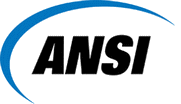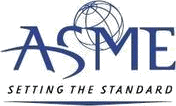ANSI B16 or ASME B16 or both?


ASME B16.36
Orifice Flanges
HISTORY - (FOREWORD ASME B16.36-2009)
August of 1956 marked the first recorded correspondence noting the lack of standardization for orifice flanges. There were, and still are, several codes for the performance and calibration of orifice flanges, but there had been no standardization of the flanges themselves. Over the ensuing 3 years, correspondence continued among the Instrument Society of America, American Gas Association, and the B16 Standards Committee.
On December 3, 1959, Subcommittee 3 (now Subcommittee C) of B16 authorized the appointment of a Task Force to undertake drafting of a standard. Although the initial work progressed smoothly, a controversy developed over the standard size of taps to be specified for the flanges. This required many years to resolve. It was finally achieved in 1973 with the issuance of a draft from the Task Force. Comments and objections to this draft from members of Subcommittee C were resolved, and a redraft was approved by the Subcommittee late in 1974. The B16 Standards Committee was balloted in the spring of 1975 and approval was gained. Comments from B16 members from the gas industry requested that the Class 400 orifice flange be included, and the B16 Subcommittee C agreed to consider this for a possible addendum. The Standardwas approved by ANSI on August 15, 1975.
On April 30, 1979, an addenda was issued, which added Class 400 flanges and Mandatory Appendix II covering reference documents and organizations. In 1982, American National Standards Committee B16 was reorganized as an ASME Committee operating under procedures accredited by ANSI. In the 1988 edition, figures were added to illustrate jack bolts and corner taps, metric units have been omitted, and references to other standards have been updated.
Following approval by the B16 Main Committee and the ASME Supervisory Board, the Standard was approved as an American National Standard by ANSI on February 18, 1988.
In 1996, several revisions were made, including the addition of angular meter taps for ring joint flanges in sizes not previously covered. Following approval by the B16 Main Committee and the ASME Supervisory Board, the Standard was approved as an American National Standard by ANSI on November 6, 1996.
In 2006, several revisions were made, including the use of metric units as the primary reference units, while maintaining U.S. Customary units in either parenthetical or separate forms. Changes to dimensions and nomenclature followed that were contained within the 2003 edition of ASME B16.5. This includes the change of minimum flange thickness from C to tf and corrections for Y1 and Y2. Class 400 remains in U.S. Customary tables in Mandatory Appendix II, but is not given in the metric dimensional tables. There are numerous requirement clarifications and editorial revisions. Following the approvals of the Standards Committee and ASME, approval for the new edition was granted by the American National Standards Institute on November 6, 2006.
In the 2009 edition, Mandatory Appendix III was revised and updated. Also, section 4, the materials section, has been revised to cover requirements of material specification editions other than those listed in Appendix III of ASME B16.5. This revision was approved by the American National Standards Institute on August 13, 2009.
